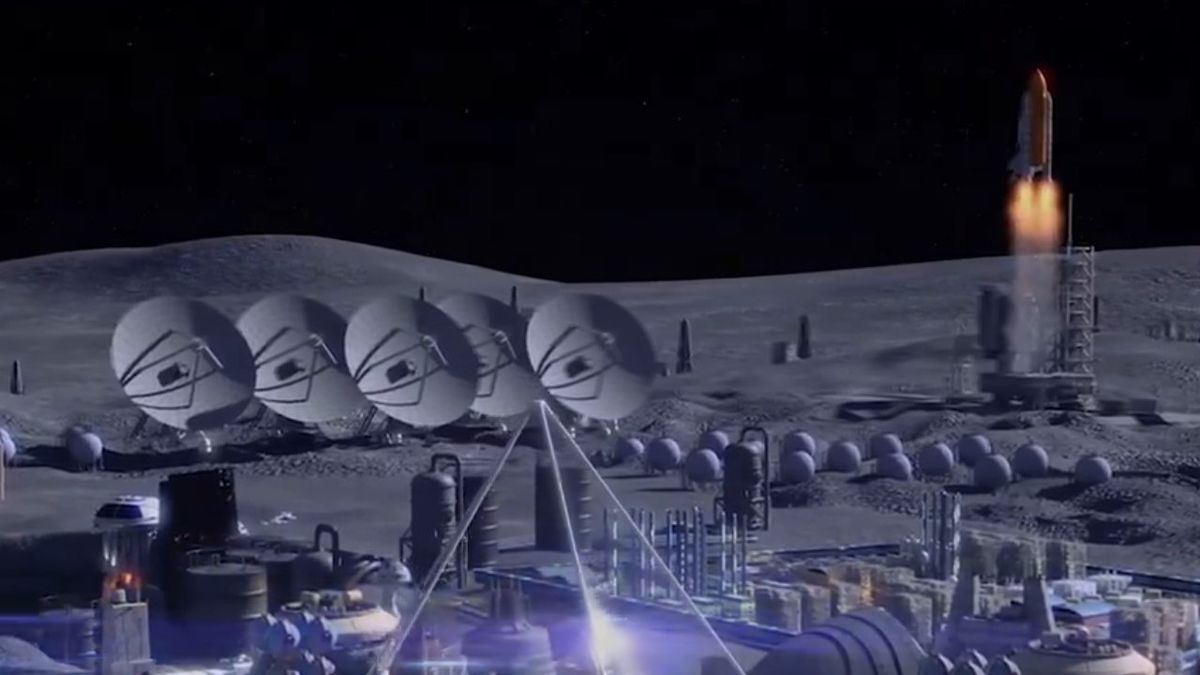Astronomers urge FCC to halt satellite megaconstellation launches

Astronomers urge FCC to halt satellite megaconstellation launches (Image Credit: Space.com)
Over 100 astronomers from leading U.S. universities have signed an open letter calling for an assessment of potential impacts of satellite megaconstellations on Earth’s environment.
The researchers urge the U.S. Federal Communications Commission (FCC), which approves satellite deployments in the U.S., to halt megaconstellation launches and conduct a thorough assessment of their possible environmental impacts before awarding further licenses.
U.S. government agencies are bound by the National Environmental Protection Act (NEPA), which requires them to consider the environmental impacts of their decisions. A 1986 categorical exclusion, however, means that satellites are exempt from this requirement.
Researchers from leading U.S. universities including Harvard, Princeton and the University of California, Berkeley, are now calling for an end to this categorical exclusion.
Related: Can we solve the satellite air pollution problem? Here are 4 possible fixes
While just a few hundred satellites orbited Earth in 1986, the number has risen to nearly 10,000 today, and a further tenfold increase is expected in the next decade. This trend is driven mostly by the emerging satellite megaconstellations, such as SpaceX’s Starlink, which promise to bridge the digital divide and provide people with no or insufficient connectivity with decent-quality internet.
Megaconstellation operators plan to regularly update their fleets with newer, more capable technology. To prevent the accumulation of space debris, they send the outdated spacecraft into Earth’s atmosphere to burn up at the end of their mission. The potential harmful effects of this satellite incineration concern the researchers. In addition to that, the growing number of satellites in orbit disrupts astronomical observations, creating unwanted streaks in telescope images.
“Artificial satellites, even those invisible to the naked eye, can obstruct astronomical observations that help detect asteroids and understand our place in the universe,” Robert McMillan, research professor of astronomy emeritus at the University of Arizona and one of the letter’s authors, said in an emailed statement. “The potentially long-term environmental harms of deploying tens of thousands of satellites are still unclear.”
Harvard University celebrity astrophysicist and extraterrestrial life researcher Avi Loeb is among the signatories of the letter. So are Jonathan McDowell, a leading space debris expert, satellite tracker and astronomer at Harvard Smithsonian; David Jewitt, the discoverer of the first Kuiper Belt object and distinguished professor of astronomy at UCLA; and space environmentalist Moriba Jah.
The U.S. nonprofit Public Interest Research Group (PIRG) conceived the letter following the release of its report detailing the potential hazards of satellite mass incineration in August.
PIRG estimates that when megaconstellation deployment reaches its peak, some 29 tons of metallic waste will be vaporizing in Earth’s atmosphere every day, the equivalent of “a car falling from space” every hour.
Satellites are mostly made of aluminum, which forms aluminum oxide when burnt. Aluminum oxide, or alumina, contributes to ozone depletion and can alter the atmosphere’s ability to absorb heat, thus affecting Earth’s climate. Satellite reentries also produce nitrogen oxides, which, too, are known to damage ozone.

“The long-term effects of this massive change to our environment aren’t clear,” the scientists said in the letter. “We can bring the world online without the unknown environmental harms of satellite megaconstellations. The FCC should coordinate closely with the Environmental Protection Agency, NASA, and other national and international regulators to require extensive environmental reviews for the new space age. We’re in a short window of time when we can prevent making a mess of space and our atmosphere rather than spend decades cleaning it up.”
PIRG campaign director Lucas Gutterman, the main force behind the initiative, told Space.com in an email that the group has reached out to FCC Space Bureau Chief Julie Kearney, asking for a meeting to discuss the concerns expressed in the letter.
“We’re continuing to work with experts to bring their concerns to the FCC and lawmakers in D.C.,” Gutterman wrote. “The space industry has moved faster than the public or regulators were able to keep up, and we’ll continue to raise the importance of this issue with the public. The speed and scale of the new space race should be a kitchen-table issue, not an esoteric discussion among a small group of industry insiders.”





